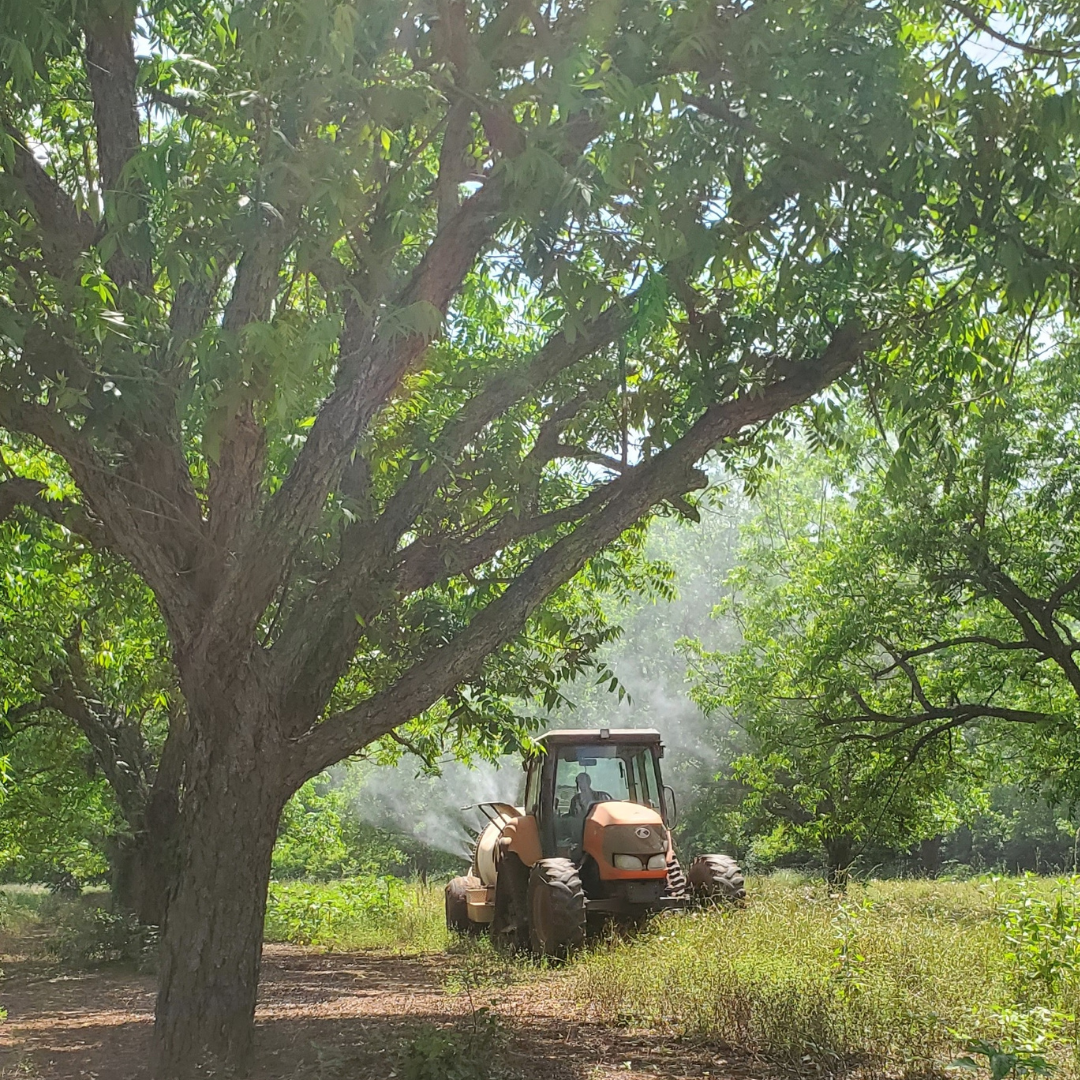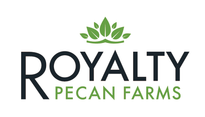
“So, what do you do the rest of the year?”
“So, what do you do the rest of the year?”
Frequently when people stop by the retail store in the fall to stock up on pecans for their holiday baking and gifts, they will ask this question. The short answer is, we grow leaves.

Right now, the crop is set. Those little baby pecans need to eat and the only way they get food is through photosynthesis, that sunlight-driven process where nutrients and water combine to generate groceries for the rest of the tree, including the seeds (yes, the nuts we eat in the fall are seeds). Chlorophyll is king….or maybe queen. It’s what gives leaves their green color, the greener the better. Zinc is key in the production of chlorophyll and pecan trees need more zinc than most other plants. The problem with zinc is that it can bind to soil particles so tightly that it is not readily available to plants through their roots, particularly in high pH soils.
So, what’s a pecan tree owner to do? Spray zinc directly on the leaves. That’s right. Zinc sulfate mixed with a little bit of nitrogen in a whole lot of water, sprayed directly onto the leaves, gets plenty of zinc into those leaves to help produce that all-important chlorophyll. We use air blast sprayers to do this. Sound aggressive, right? It is. Twin fans moving air at 100 miles per hour hits those zinc-laden water droplets and pulverizes them into a mist that coats both sides of every leaf.  Now, a pecan tree won’t die if additional zinc isn’t provided but the quality and quantity of the crop will most definitely be affected. Inadequate zinc means the leaves are lighter in color and smaller in size because the “grocery store” isn’t as full. Since zinc isn’t mobile within the plant, that is, zinc sprayed onto one leaf won’t scoot over to a new leaf when it unfurls, it is important to spray zinc regularly until all the new leaves are out. So, we spray the orchard every two weeks from April 1 to July 1, a total of seven times.
Now, a pecan tree won’t die if additional zinc isn’t provided but the quality and quantity of the crop will most definitely be affected. Inadequate zinc means the leaves are lighter in color and smaller in size because the “grocery store” isn’t as full. Since zinc isn’t mobile within the plant, that is, zinc sprayed onto one leaf won’t scoot over to a new leaf when it unfurls, it is important to spray zinc regularly until all the new leaves are out. So, we spray the orchard every two weeks from April 1 to July 1, a total of seven times.
And, since it takes us five days to spray 500 acres with two air blast sprayers, THAT is a big part of what we do the rest of the year.
Products
View all
